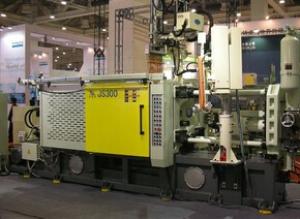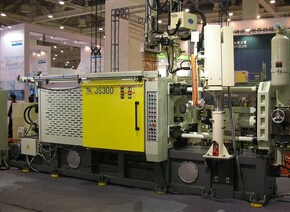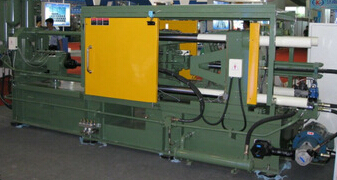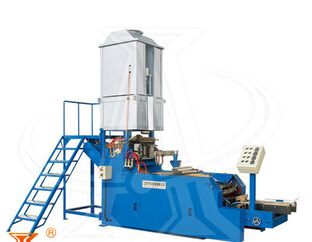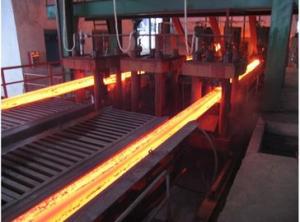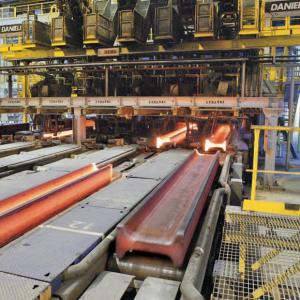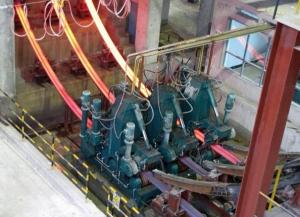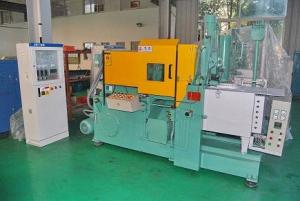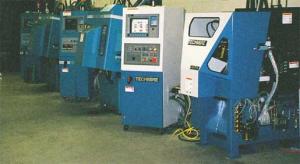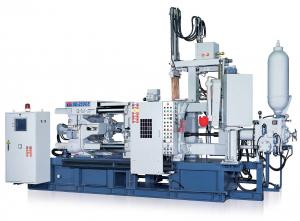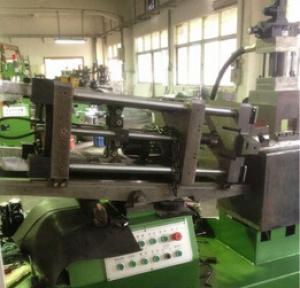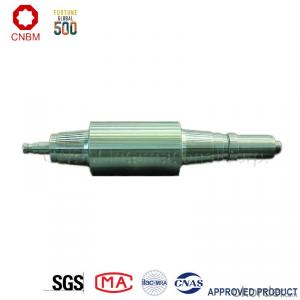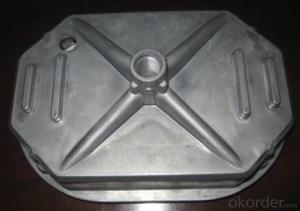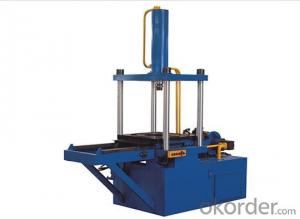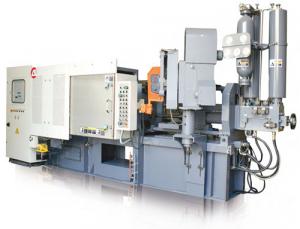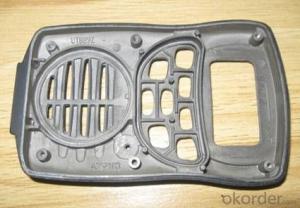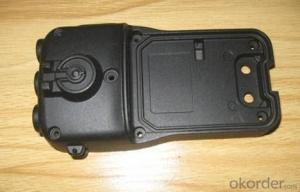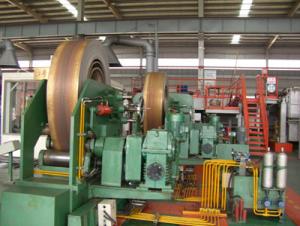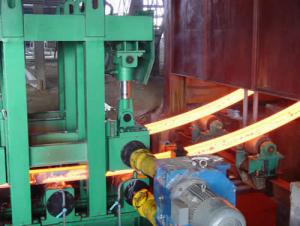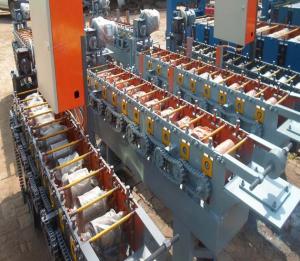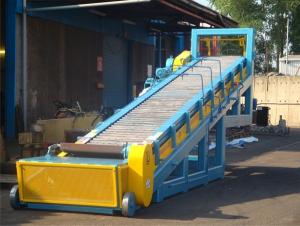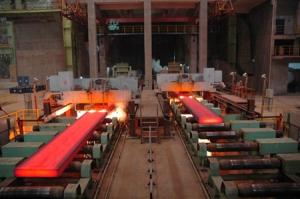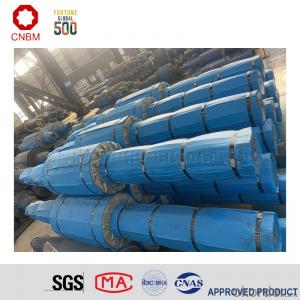Hight quality producing aluminium die casting machine
OKorder Service Pledge
Quality Product, Order Online Tracking, Timely Delivery
OKorder Financial Service
Credit Rating, Credit Services, Credit Purchasing
You Might Also Like
Specifications
1.Top brand of China in die casting machine line
2.Touch screen PLC
3.Fully automatic is available
4.2600Ton sold to Germany
Hydraulic system,and control system
1.All electric elements, valves, pumps and seal parts are made in Germany or Japan.
2.Imported proportional pressure valve and proportional flow valve for controlling the pressure and flow so that the mechanism can run quickly,stably,safely,reliably and energy-savingly.
- Q: How is molten metal poured and controlled in vacuum casting with metal casting machinery?
- Molten metal is poured and controlled in vacuum casting with metal casting machinery through a precise and controlled process. Firstly, the metal is melted in a furnace, ensuring it reaches the desired temperature. Once the molten metal is ready, it is transferred to a vacuum chamber where the pressure is reduced, creating a vacuum environment. This vacuum helps to eliminate impurities and gas bubbles from the molten metal. Next, a mold is prepared, typically made of a heat-resistant material such as ceramic or metal. The mold is placed in the vacuum chamber, and the molten metal is poured into the mold under controlled conditions. The vacuum environment ensures that the metal fills the mold evenly and prevents any air pockets or voids from forming. During the pouring process, the metal casting machinery allows for precise control of the flow rate and temperature of the molten metal. This control helps in achieving accurate and consistent results. Once the mold is filled, the molten metal is allowed to cool and solidify, forming the desired shape. Overall, vacuum casting with metal casting machinery provides a controlled and efficient method for pouring and controlling molten metal, ensuring high-quality and defect-free castings.
- Q: How does metal casting machinery control the temperature and flow of the molten metal?
- Metal casting machinery controls the temperature and flow of the molten metal through various mechanisms. The machinery typically consists of a furnace, which heats the metal to its melting point, and a crucible, where the molten metal is contained. To regulate the temperature, the machinery utilizes thermocouples or pyrometers to monitor and adjust the heat levels within the furnace. Additionally, the machinery may have a system of cooling channels or water-cooled jackets to prevent overheating. To control the flow of molten metal, the machinery often employs a combination of gravity, pressure, and gating systems. Gravity helps to feed the molten metal into the mold, while pressure can be applied through the use of compressed air or hydraulic systems. The gating system, which includes sprues, runners, and gates, directs and controls the flow of the molten metal into the mold cavity, ensuring proper filling and solidification.
- Q: What are the common quality control techniques used in metal casting machinery?
- Some common quality control techniques used in metal casting machinery include visual inspection, dimensional inspection, material testing, and process control monitoring. Visual inspection involves visually inspecting the castings for any surface defects or irregularities. Dimensional inspection is performed to ensure the castings meet the required specifications and tolerances. Material testing involves conducting various tests to verify the mechanical properties and composition of the cast metal. Process control monitoring involves monitoring and controlling various parameters such as temperature, pressure, and cooling rates during the casting process to ensure consistent and high-quality castings are produced.
- Q: What are the different types of casting defects that can occur in shell molding?
- Some common types of casting defects that can occur in shell molding include shrinkage porosity, gas porosity, cold shuts, misruns, and sand inclusions.
- Q: What are the common troubleshooting techniques for metal casting machinery?
- Some common troubleshooting techniques for metal casting machinery include inspecting and cleaning components, checking for loose or worn parts, adjusting settings and parameters, monitoring and analyzing machine performance data, and consulting equipment manuals and technical support.
- Q: How are the defects related to machining prevented in metal casting machinery?
- Various measures and techniques can be utilized to prevent defects associated with machining in metal casting machinery. To begin with, the prevention of defects relies heavily on the proper design and engineering of the machinery. This entails ensuring that the machine possesses structural integrity, employing suitable materials and dimensions to withstand the forces and stresses involved in the casting process. Doing so helps to avert problems like excessive vibrations and misalignment, which can result in machining defects. Maintenance and inspection of the machinery on a regular basis are also of utmost importance. This includes the careful examination and calibration of the various components and systems, such as cutting tools, spindles, bearings, and guides, to guarantee that they are in optimal condition. Any indications of wear and tear or malfunctions must be addressed promptly to prevent defects during machining. Moreover, the implementation of proper operating procedures and practices can significantly diminish the risk of defects. This necessitates training and educating machine operators on the correct techniques, settings, and parameters for machining different types of metals and castings. Having skilled and experienced operators who possess a comprehensive understanding of the machinery and its capabilities can significantly reduce defects. An additional critical aspect is the utilization of high-quality cutting tools and materials. The application of tools that are specifically suitable for the given machining requirements and materials being casted can greatly enhance the precision and quality of the machining process. Regularly replacing worn-out tools and employing appropriate lubricants and coolant can also contribute to defect prevention. Furthermore, the incorporation of advanced technologies and automation in metal casting machinery can offer further protection against defects. These technologies, such as computer numerical control (CNC) systems, can provide precise control and monitoring of the machining process, thereby diminishing the chances of human errors and inconsistencies. Real-time monitoring and feedback systems can also aid in the identification and rectification of any issues during machining, thereby preventing defects from occurring. In conclusion, a combination of proper machine design, regular maintenance, skilled operators, high-quality tools, and advanced technologies can effectively prevent defects associated with machining in metal casting machinery.
- Q: How is the quality of metal castings ensured in machinery?
- Various techniques and processes are combined to ensure the quality of metal castings in machinery. To begin with, it is crucial to select high-quality raw materials. The specific type of metal alloy used and its composition greatly influence the final quality of the casting. By carefully choosing the appropriate materials and ensuring their purity, manufacturers can minimize defects and enhance overall quality. Moreover, close monitoring and control of the casting process are essential. This involves utilizing advanced technologies like computer-aided design (CAD) and computer-aided manufacturing (CAM) systems. These systems optimize the casting design, simulate and analyze the process, and identify potential issues or defects before casting occurs. Furthermore, modern casting methods such as investment casting or die casting allow for greater precision and control. These methods enable manufacturers to achieve complex shapes, tight tolerances, and superior surface finishes, resulting in improved quality. Additionally, quality control measures are implemented throughout the casting process. Non-destructive testing techniques like visual inspection, ultrasonic testing, magnetic particle testing, or X-ray inspection are employed to identify any internal or surface defects in the castings. This ensures that only high-quality components are used in machinery. Lastly, manufacturers often adhere to industry standards and certifications, such as ISO 9001, to maintain consistent quality. These standards define the requirements for quality management systems and contribute to a high level of quality control in the production of metal castings. In summary, the quality of metal castings in machinery is guaranteed through the careful selection of materials, the use of advanced technologies, strict control of the casting process, implementation of quality control measures, and adherence to industry standards. These practices collectively result in the production of reliable and high-quality metal castings for use in machinery.
- Q: What are the common molding materials used in centrifugal casting with metal casting machinery?
- Centrifugal casting with metal casting machinery utilizes various molding materials, including sand, ceramic, plaster, graphite, and metal. 1. Sand is the most commonly employed molding material in centrifugal casting. By blending sand with a binder like clay or resin, sand molds are formed to create mold cavities. With their versatility, cost-effectiveness, and ability to withstand high temperatures, sand molds are suitable for a wide range of metal casting applications. 2. Ceramic molds consist of a mixture of ceramic powders and binders. These molds exhibit exceptional heat resistance and dimensional stability, making them ideal for casting metals that require precise details. Jewelry, aerospace components, and dental prosthetics often employ ceramic molds. 3. Plaster molds, also known as investment molds, are formed by pouring a plaster and water slurry around a pattern. As the plaster hardens, it creates a mold cavity for casting purposes. Plaster molds are popular for small-scale production and prototyping as they offer good surface finishes and dimensional accuracy. 4. Graphite molds are utilized for casting metals that necessitate high temperature resistance and excellent thermal conductivity. Graphite molds are shaped by cutting or machining graphite blocks. They are commonly used in the production of copper, bronze, and other non-ferrous metal castings. 5. Metal molds, typically made from steel or cast iron, are occasionally used in centrifugal casting. These molds are suitable for high-volume production runs or large-sized components due to their durability and ability to withstand repeated use. Metal molds find application in industrial settings. It is worth noting that the selection of a molding material depends on factors such as the metal type, design complexity, desired surface finish, and dimensional accuracy requirements.
- Q: What are the steps involved in the metal casting process using machinery?
- The steps involved in the metal casting process using machinery typically include pattern creation, mold preparation, melting of the metal, pouring the molten metal into the mold, solidification, cooling, and finally, the removal of the casting from the mold and any additional finishing processes.
- Q: Can metal casting machinery handle the production of castings with high precision?
- Yes, metal casting machinery can handle the production of castings with high precision. Advanced casting technologies and modern machinery have greatly improved the precision and accuracy of metal casting processes. With the use of computer-aided design (CAD) and computer-aided manufacturing (CAM) technologies, manufacturers can now design intricate and complex geometries with high precision. Additionally, sophisticated casting machinery, such as high-pressure die casting machines and investment casting equipment, allow for the production of castings with tight tolerances and intricate details. Furthermore, advancements in process control, such as automated pouring systems and real-time monitoring, help ensure consistent and precise casting quality. The use of robotics and automation in metal casting also contributes to higher precision, as they can perform repetitive tasks with minimal variation. Moreover, advancements in material science and metallurgy have led to the development of innovative alloys specifically designed for high-precision castings. These alloys have improved fluidity and solidification characteristics, allowing for better replication of complex shapes and intricate details. Overall, while achieving high precision in metal casting may require careful process optimization and the use of advanced machinery, it is certainly possible to produce castings with exceptional precision using modern casting technologies.
Send your message to us
Hight quality producing aluminium die casting machine
OKorder Service Pledge
Quality Product, Order Online Tracking, Timely Delivery
OKorder Financial Service
Credit Rating, Credit Services, Credit Purchasing
Similar products
Hot products
Hot Searches
